As the crisp air of late autumn gives way to winter, it’s officially chocolate season! How many cups of hot cocoa have you sipped on so far? Today, Cumo shares a delightful Sourdough Chocolate Lodève Bread recipe—a rich and tender loaf perfect for cozy family gatherings this holiday season.
Lodève bread pays homage to Saint Fulcran, a medieval bishop from the picturesque French village of Lodève. This bread requires no shaping and resembles a ciabatta in its high hydration and rustic appearance. However, unlike ciabatta, which often includes Italian olive oil, Lodève bread is made without it. Its signature airy crumb and delicate structure are the result of long fermentation and overhydration, making it irresistibly soft for any bread enthusiast.
This version incorporates decadent chocolate chips, making it an indulgent centerpiece for your Christmas celebrations.
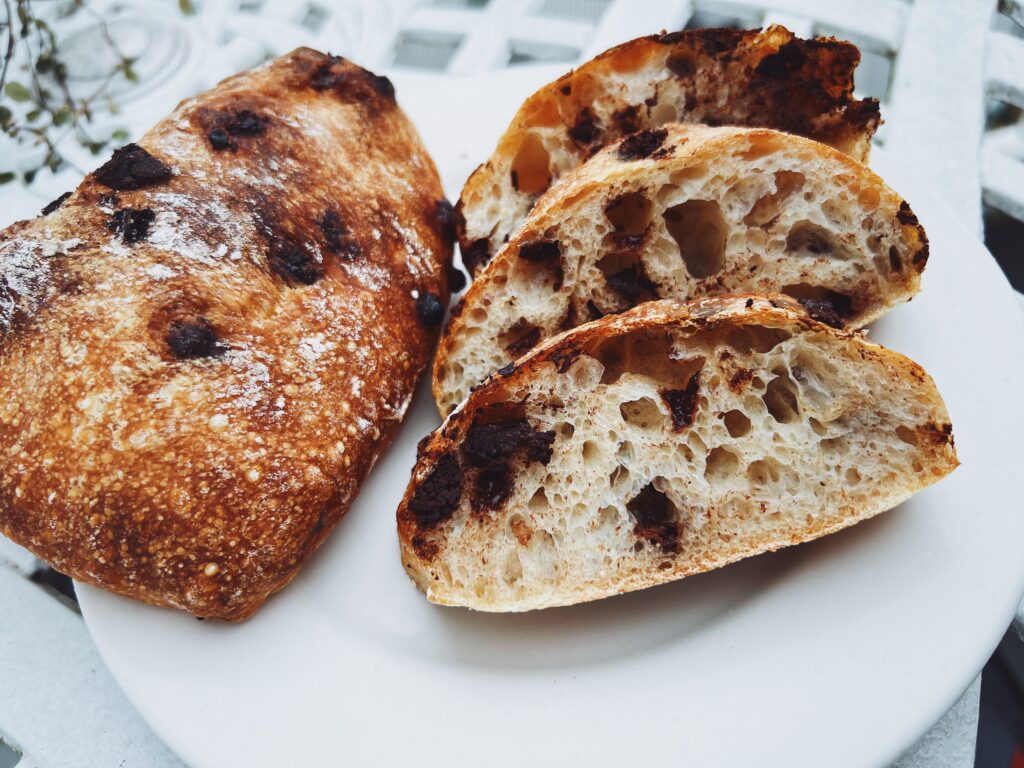
Preparation time 15-20 Hours
Baking Time 20 Min
Serves 4-10
Dietary vegan and vegetarianre
Check our video tutorial— Try to make this with Cumo!
Recipe Notes
This recipe features over 90% hydration, making the dough quite challenging to handle. If you’re using regular bread flour from the supermarket (with varying absorption rates), reduce the hydration to 83% (total water = 457g). However, keep the water content above 80% to maintain the bread’s characteristic texture. A mixer is required for this recipe, but don’t worry—Cumo is working on a hand-kneaded version, so stay tuned!
Ingredients
- Bread flour: 450g
- Whole wheat flour: 50g (can be substituted with bread flour)
- Salt: 10g
- Sourdough starter: 100g
- Instant dry yeast: 1g
- Water: 395g
- Additional water: 100g
- Chocolate chips: 85g (or up to 100g for chocoholics!)
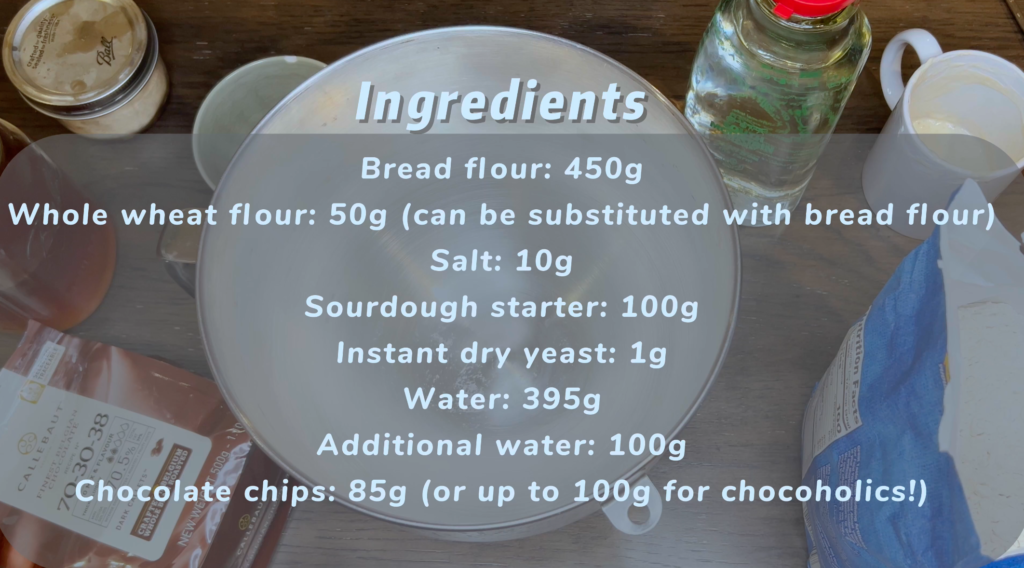
Instructions
1. Mixing the Dough
- Add all ingredients (except the chocolate chips) to a mixer. Start the mixer on speed 2–3 to combine all the ingredients into a dough.
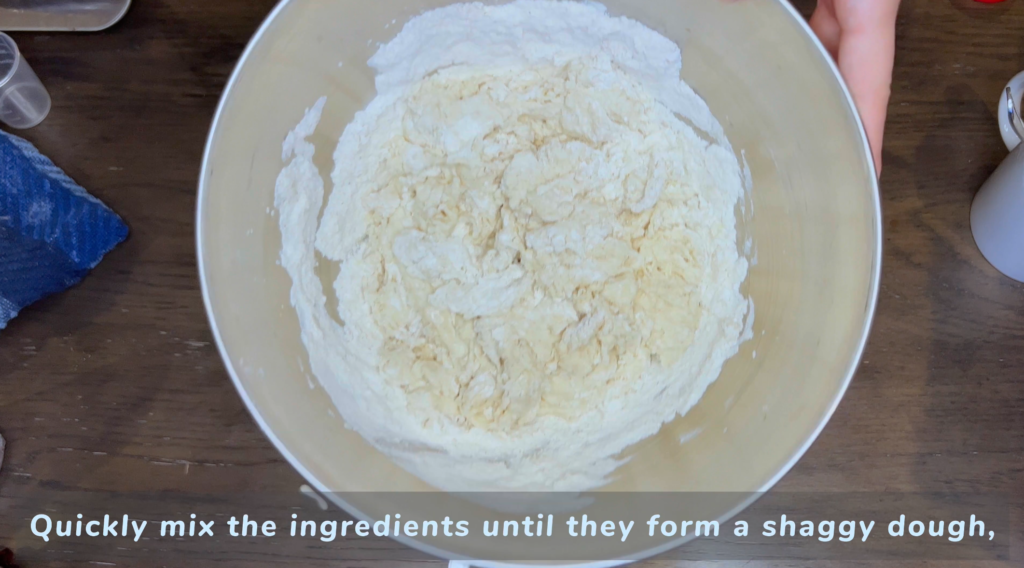
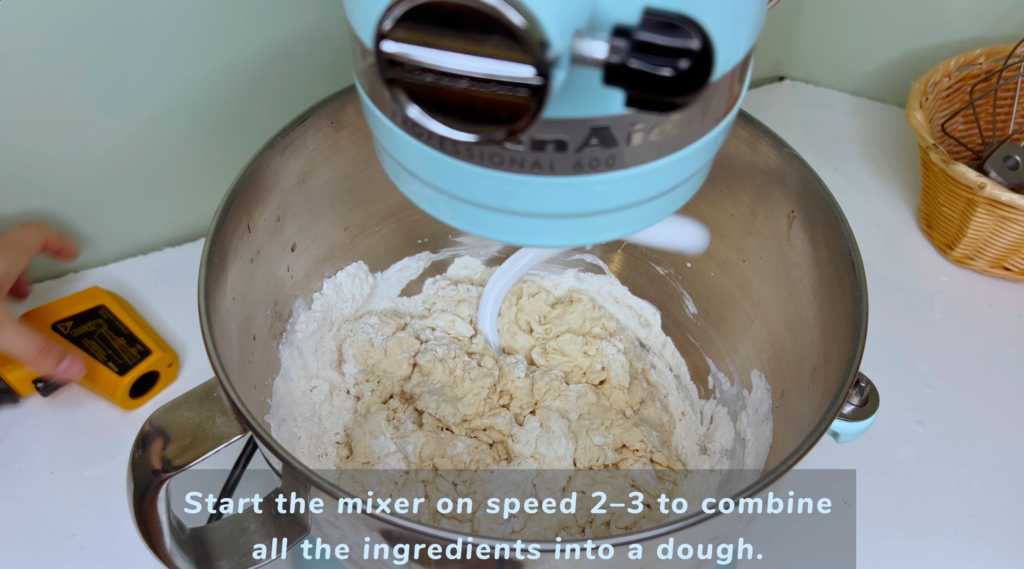
- Then, increase to speed 5–6 for high-speed kneading until the dough reaches a rough gluten window.
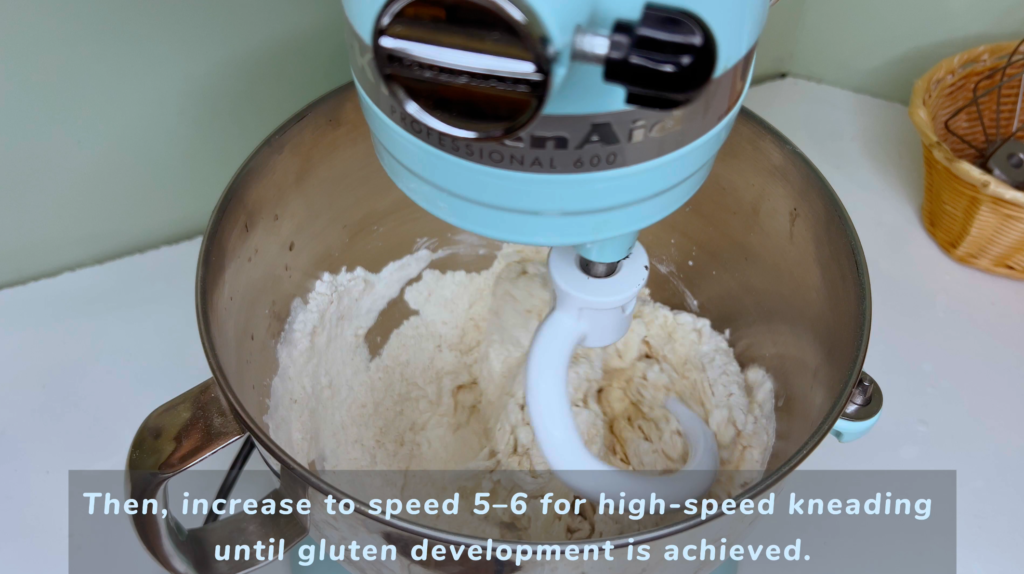
- gradually add the reserved water in three additions. Wait for the dough to fully absorb the water each time before adding the next portion. With each addition, you’ll notice the dough transition from a loose, wet consistency to a stronger, more cohesive structure as it absorbs the water.
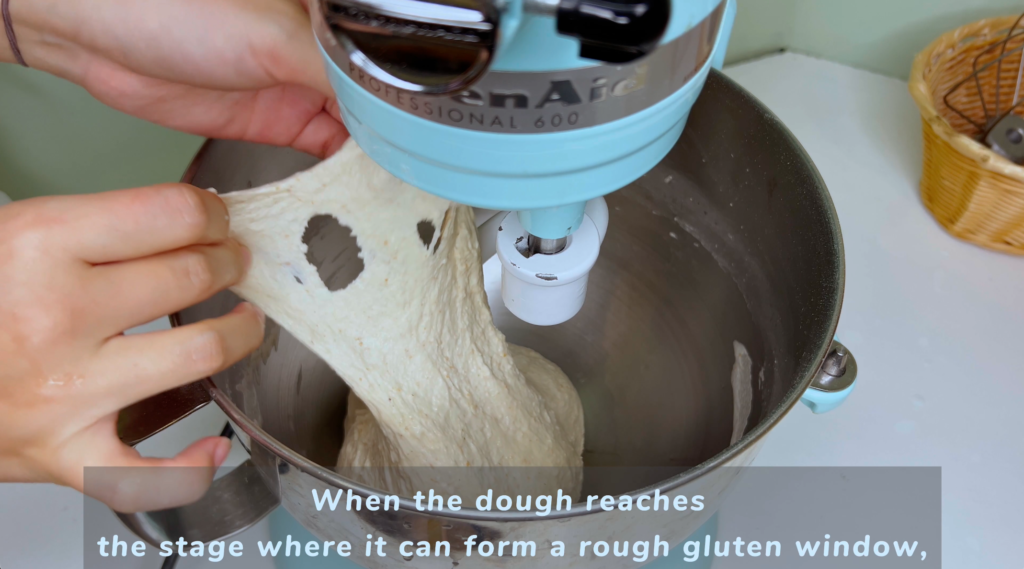
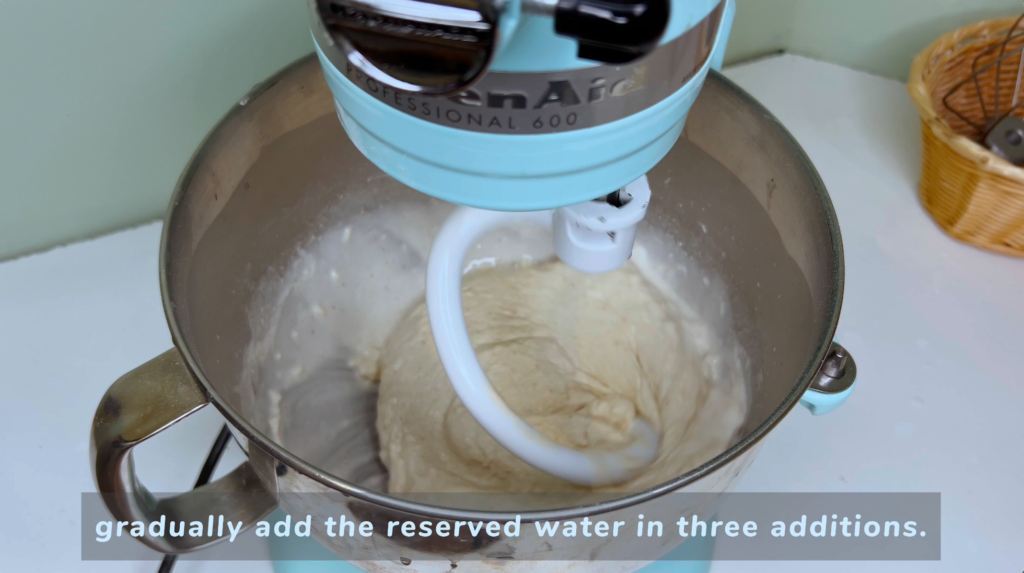
- After the last addition, use speed 5–6 to mix until the dough reaches full gluten development (temperature should remain below 25°C/78°F). Transfer to a lightly greased fermentation container.
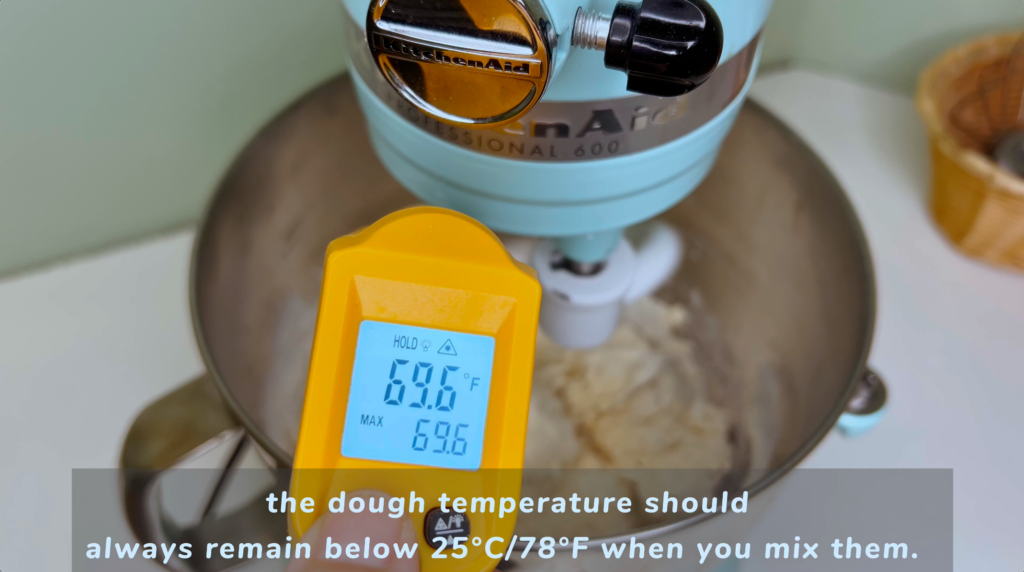
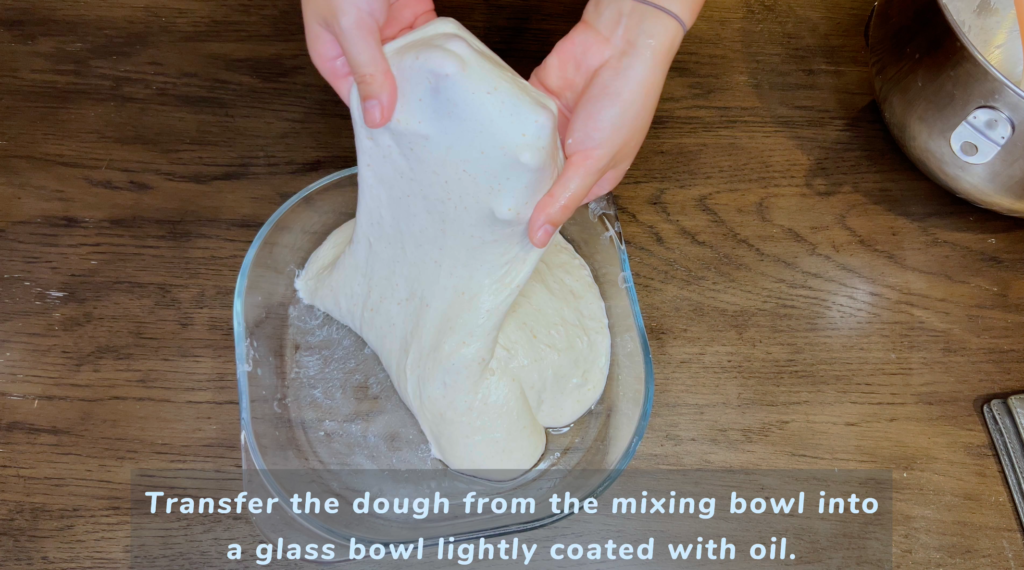
2. Incorporating the Chocolate and Folding
Sprinkle the chocolate chips over the dough and fold them in gently using the “stretch and fold” method.(You can check our folding method blog to learn how to shape a dough)
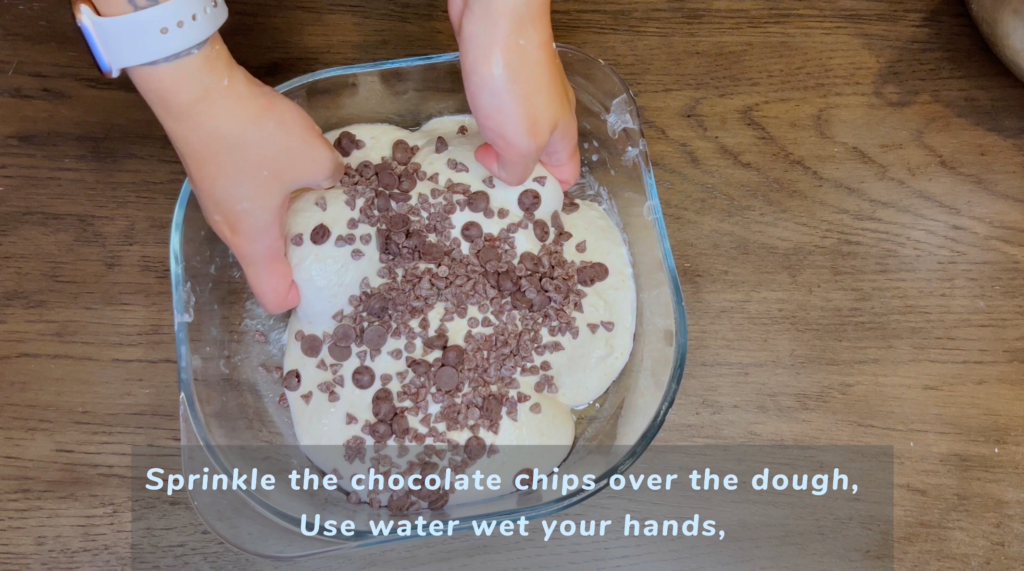
3. Bulk Fermentation
Ferment the dough at 24°C for about 1.5 hours, performing one fold halfway through.
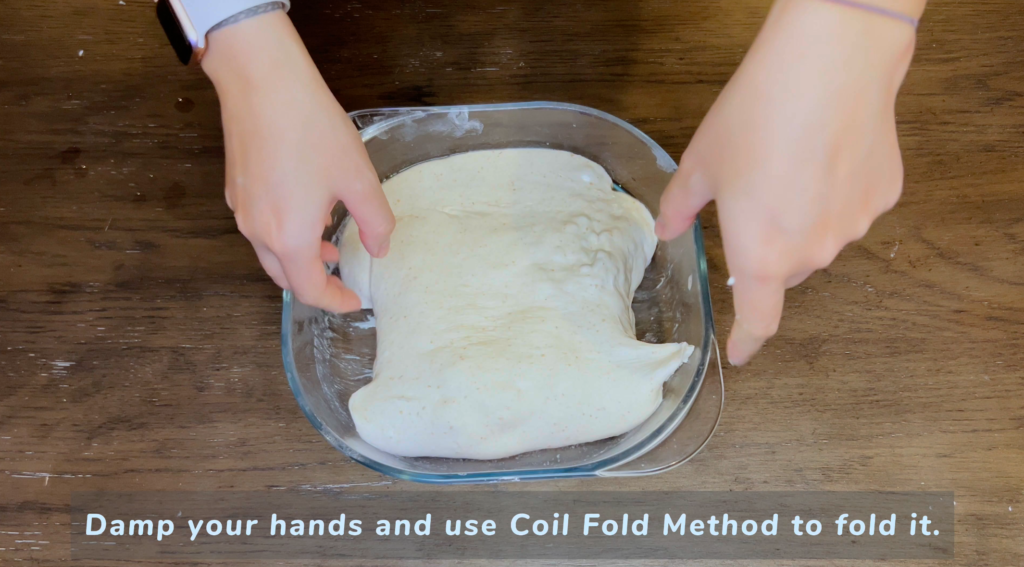
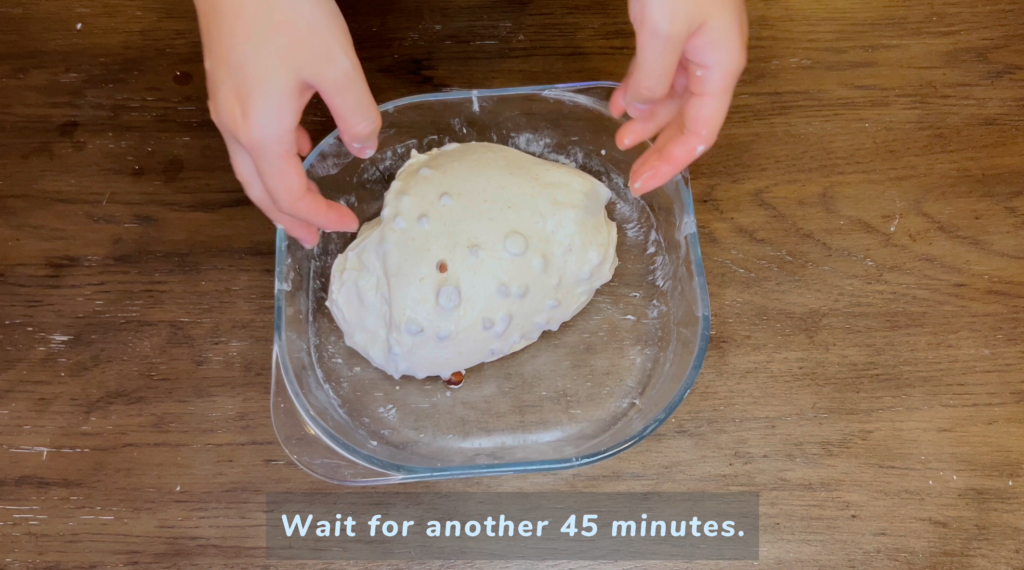
4. Cold Fermentation
Transfer the dough to the refrigerator (around 5°C) and let it ferment for 10–15 hours. This extended cold fermentation is essential for developing flavor and structure.

5. Prepping for Shaping
After the dough has doubled in size in the fridge, it’s ready to be shaped.
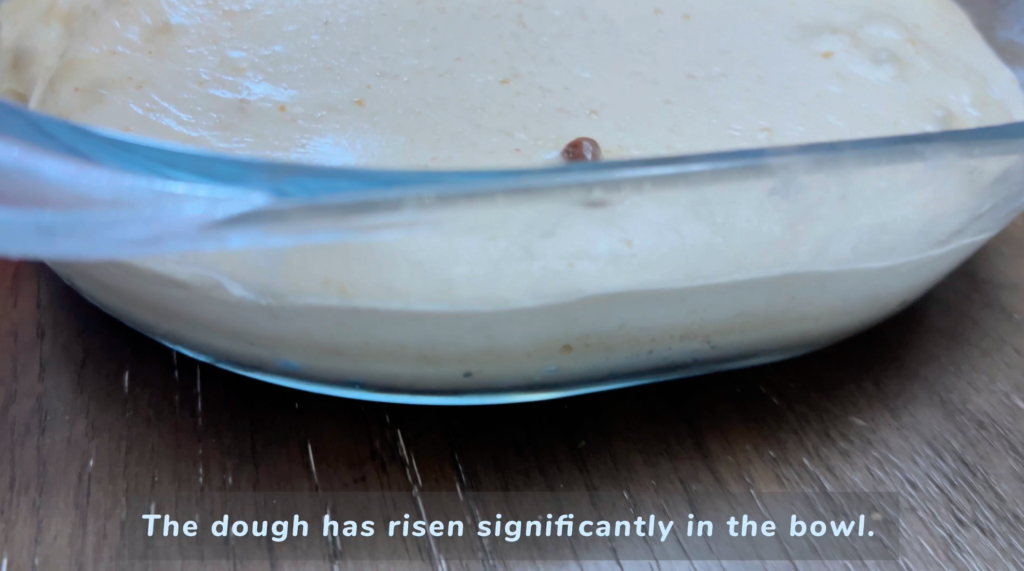
Shaping
- Dust the dough surface with some flour, then gently flip it onto a floured proofing cloth.
- Stretch the dough slightly to even out its thickness.
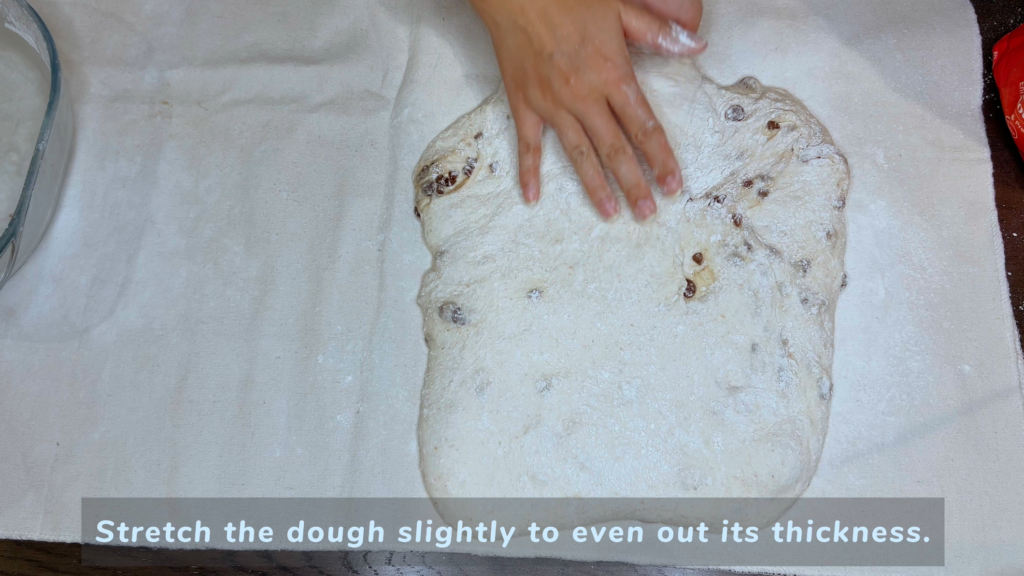
- Cut into your desired shapes—this recipe makes six squares for best results.
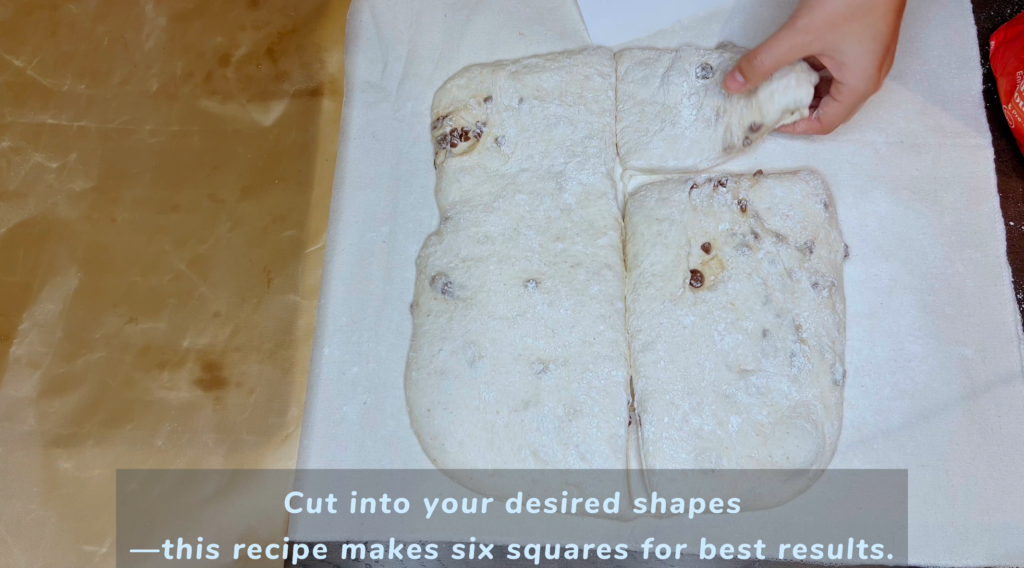
- Let the pieces proof at room temperature for about 30min to 1 hour.
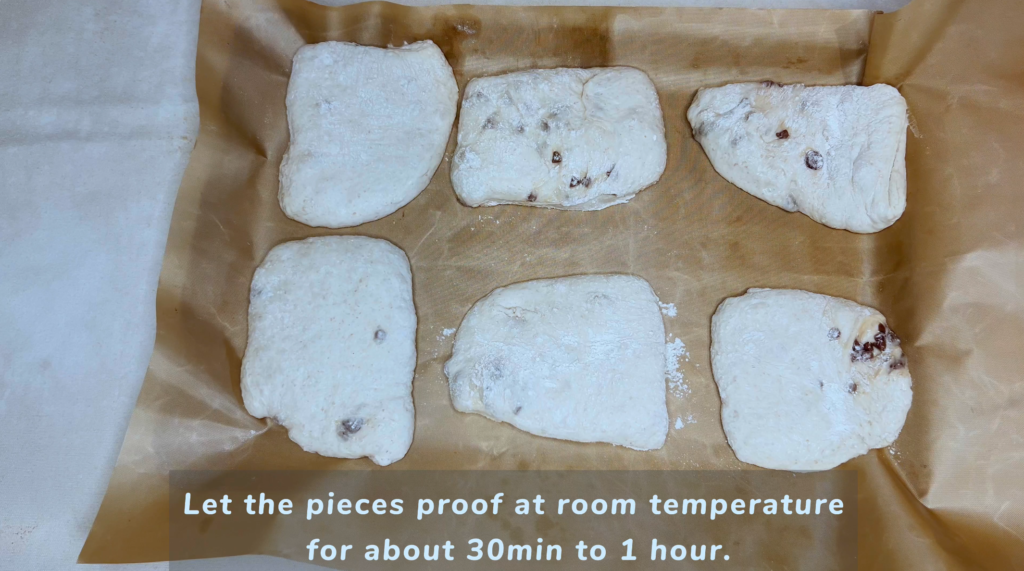
Baking
1. Preheat the Oven
Start preheating your oven during the final proof, setting it to 230°C (top and bottom heat).
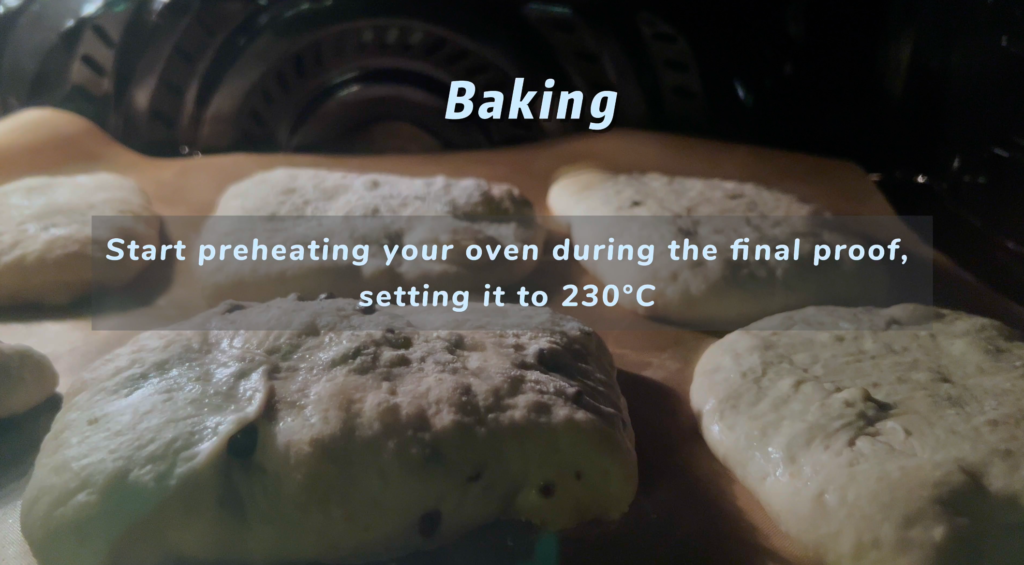
2. Create Steam
For steam:
- Option 1: Pour ½ cup of water into the oven bottom (avoid heating elements) immediately after placing the bread in.
- Option 2: Preheat a tray with small stones or lava rocks at the bottom of your oven and pour ½ cup of water over them to generate steam.
3. Bake
Place the bread directly on a baking stone, copper sheet, or a preheated baking tray. Bake for 15–20 minutes until golden and aromatic.
Share Your Results!
Crafting chocolate Lodève bread is a rewarding experience that combines artistry with indulgence. Follow this step-by-step recipe for a nearly foolproof baking adventure. Don’t forget to share your results and questions in the comments—Cumo is always here to help you on your baking journey!



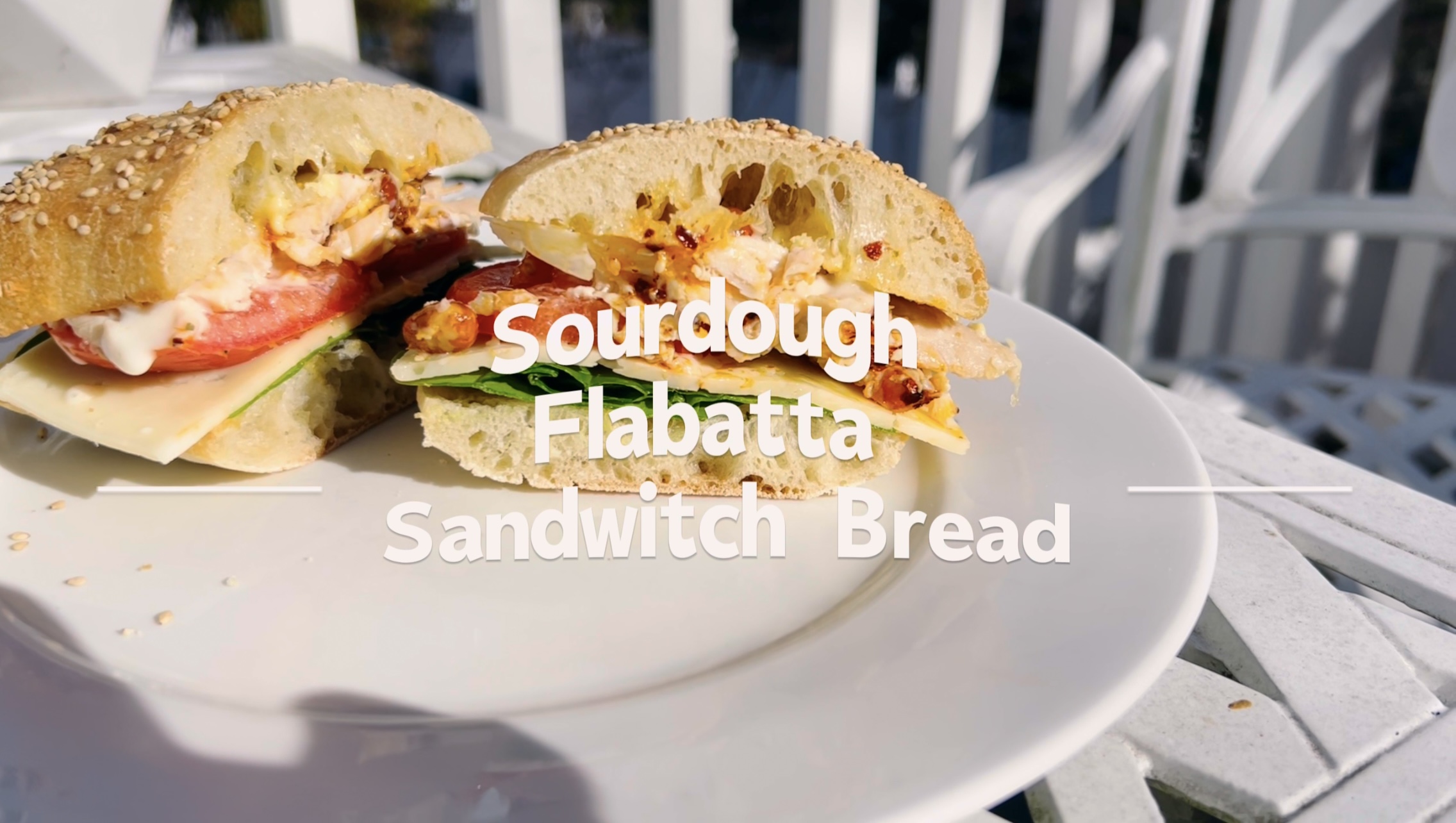

Leave a Reply